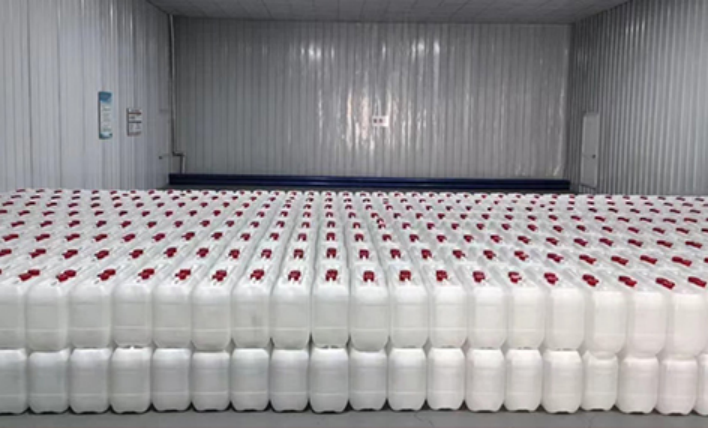
Aug . 22, 2025 16:48 စာရင်းသို့ ပြန်သွားရန်
The Chemical Properties of Anhydrous Acetic Acid
Anhydrous acetic acid, also known as glacial acetic acid, is a key chemical compound with a range of unique properties that make it invaluable in various industries, from food processing to pharmaceuticals. Hebei Yishan Flavors Co., Ltd. (formerly Shijiazhuang Gaocheng Xiongxing Metal Wire and Rod Factory) specializes in producing and selling edible acetic acid, including high-quality variants related to anhydrous acetic acid. Renowned for quality-guaranteed products, value for credit, and contract-abiding practices, the company has built long-term partnerships with many customers, earning widespread recognition. Their commitment to advancing the edible acetic acid industry aligns with the need for reliable chemical compounds, making them a trusted name in the field.

Molecular Structure and Composition of Anhydrous Acetic Acid
- Formula and Bonding: Anhydrous acetic acid has the chemical formula CH₃COOH, consisting of two carbon atoms, four hydrogen atoms, and two oxygen atoms. The molecule features a methyl group (CH₃) attached to a carboxyl group (COOH), where the carboxyl’s hydroxyl (-OH) and carbonyl (C=O) groups create a polar structure. This polarity is key to its solubility in water and reactivity with other substances.
- Purity Definition: What sets anhydrous acetic acidapart is its near-total lack of water—typically 99.5% pure or higher. When water is present, it forms regular acetic acid solutions. The term glacial acetic derives from its ability to solidify into ice-like crystals at around 16.6°C (61.9°F) due to this high purity, a unique physical trait tied to its molecular structure.
- Isomerism and Stability: The molecule has no isomers under standard conditions, maintaining a stable structure. Its stability allows 1 glacial acetic acid(a unit of measurement referring to pure glacial acetic acid) to be stored for extended periods without significant degradation, provided it’s kept away from strong reactants.
Reactivity and Chemical Reactions of Anhydrous Acetic Acid
- Neutralization with Bases: Anhydrous acetic acidreacts with bases (such as sodium hydroxide) to form acetate salts and water, a classic neutralization reaction: CH₃COOH + NaOH → CH₃COONa + H₂O. This is used in producing sodium acetate, a common preservative and buffer in food and pharmaceuticals.
- Esterification: When heated with alcohols in the presence of a catalyst (like sulfuric acid), glacial aceticacid undergoes esterification to form esters. For example, with ethanol, it produces ethyl acetate (CH₃COOCH₂CH₃), a solvent widely used in paints and adhesives. This reaction highlights its role as an acylating agent.
- Oxidation and Reduction: Anhydrous acetic acidis relatively stable under normal conditions but can decompose when exposed to strong oxidizing agents or high temperatures, releasing carbon dioxide and water. It resists reduction, making it suitable for processes requiring a stable acidic environment.
Comparing Anhydrous Acetic Acid with Diluted Acetic Acid
|
Property |
Anhydrous Acetic Acid (Glacial Acetic) |
Diluted Acetic Acid (e.g., Vinegar) |
|
Purity |
≥99.5% |
5–20% |
|
Melting Point |
16.6°C (solidifies easily) |
Below 0°C (remains liquid) |
|
Corrosiveness |
High (can burn skin, eyes) |
Low (mildly irritating) |
|
Main Uses |
Chemical synthesis, pharmaceuticals |
Food flavoring, cleaning |
|
Reactivity with Metals |
Reacts with active metals (e.g., zinc) |
Slower, weaker reaction |
Safety and Handling of 1 Glacial Acetic Acid
- Corrosivity Risks: 1 glacial acetic acidis highly corrosive to skin, eyes, and mucous membranes. Contact can cause severe burns, so protective gear (gloves, goggles, lab coats) is mandatory. Inhalation of its vapors irritates the respiratory tract, requiring well-ventilated workspaces.
- Storage Guidelines: It should be stored in tightly sealed glass or chemical-resistant plastic containers, away from heat, open flames, and strong bases or oxidizers. Due to its freezing point, containers should have space to accommodate expansion when it solidifies.
- Spill Response: Small spills of anhydrous acetic acidcan be neutralized with a weak base like sodium bicarbonate. Larger spills require professional cleanup to prevent environmental contamination, as concentrated acetic acid can harm aquatic life.
Anhydrous Acetic Acid FAQS
Why Is Anhydrous Acetic Acid Called Glacial Acetic?
It earns the name glacial acetic because its high purity (≥99.5%) causes it to solidify into ice-like crystals at 16.6°C, resembling glacial ice. This unique freezing property distinguishes it from diluted acetic acid solutions.
What Is the Difference Between 1 Glacial Acetic Acid and Regular Acetic Acid?
1 glacial acetic acid refers to pure, anhydrous acetic acid (≥99.5% pure), while regular acetic acid is diluted with water (e.g., vinegar is ~5% acetic acid). The former is more corrosive, has a higher melting point, and is used in industrial processes, unlike the latter’s common use in food.
Is Anhydrous Acetic Acid Flammable?
Anhydrous acetic acid is not highly flammable but can catch fire at high temperatures (flash point: 43°C). Its vapors can form explosive mixtures with air, so it should be kept away from open flames and sparks.
How Is Anhydrous Acetic Acid Used in Food Production?
While anhydrous acetic acid itself is too concentrated for direct food use, diluted forms (produced by controlled addition of water) are used as preservatives and flavorings. Companies like Hebei Yishan Flavors Co., Ltd. specialize in edible-grade acetic acid, ensuring safety for food applications.
Can Anhydrous Acetic Acid Be Mixed with Water?
Yes, anhydrous acetic acid mixes fully with water in all proportions, releasing heat in an exothermic reaction. It’s important to add the acid to water (not vice versa) to prevent splashing, especially with large volumes.
-
Environmental Impact of Glacial CH3COOH Spills
သတင်းAug.22,2025
-
Common Solvents Used with Glacial Acetic Acid Solution
သတင်းAug.22,2025
-
The Chemical Properties of Anhydrous Acetic Acid
သတင်းAug.22,2025
-
Recipes That Benefit From Acetic Acid Edible
သတင်းAug.22,2025
-
Storage Guidelines for Acetic Acid Glacial
သတင်းAug.22,2025
-
Safety Precautions When Handling Glacial Acetic Acid
သတင်းAug.22,2025
